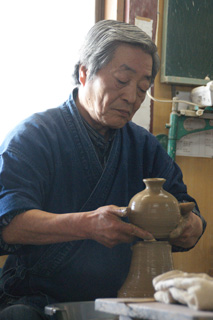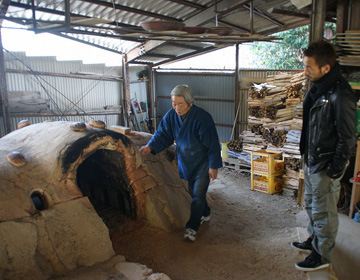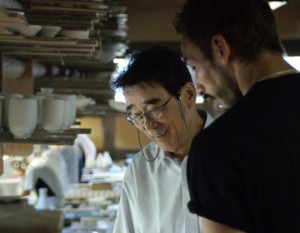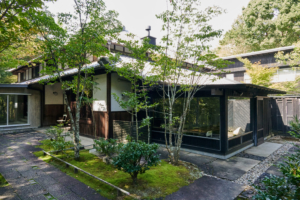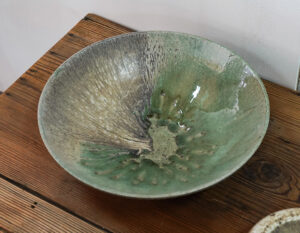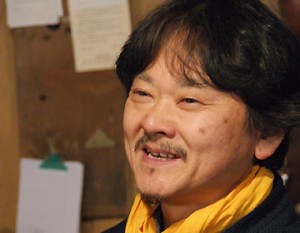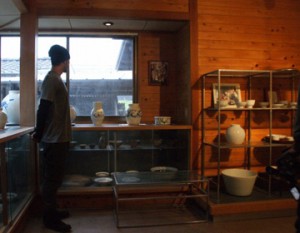Tamba-yaki used to be produced with a cellar kiln
Tamba-yaki, with a long history, used to employ a cellar kiln for firing a long time ago. A cellar kiln is built by making a hole on the mountain slope and solidifying the ceiling with soil.
The firing of Tamba-yaki takes from four days to a week. The ash from burnt firewood fall on the pieces, developing varied colors when it melts and mixes with the iron in the clay. The resulting natural shade is the appeal of old Tamba-yaki.
In Edo Period, a climbing kiln was introduced from the Korean Peninsula, and this type of kiln became mainstream. A climbing kiln enables mass production, cutting down on firing time. Firing with the climbing kiln requires glaze. The pieces come out looking quite different from one another because glaze and ash are fused together, resulting in fascinating patterns and colors.
Tamba-yaki centered on plain, simple living utensils when the cellar kiln was used. After the introduction of the climbing kiln, they began to make tea bowls, jars and vases and created numerous excellent pieces. Such developments helped disseminate Tamba-yaki all over Japan.

Cherishing living with ceramic utensils
There aren’t many climbing kilns in Japan today. However, some potters in Tamba still use the kiln. Yamago-tokatsu-gama is one of such potters.
The Ichino father-and-son team at Yamago-tokatsu-gama makes products that suit the modern day life by introducing a modern sensibility while preserving the tradition of Tamba-yaki. Their philosophy is to cherish the lifestyle with ceramic utensils.
They have a small workshop called ”Tokibutai” where visitors can watch the working artisans while enjoying a cup of tea or coffee.
Katsuiso-san, the son, holds pottery classes that always attract many students. You can make your own ware by turning a potter’s wheel. As Hyogo is a famous ”sake” producing area, wouldn’t it be nice to drink ”sake” with a ”sake” cup of your own making?
